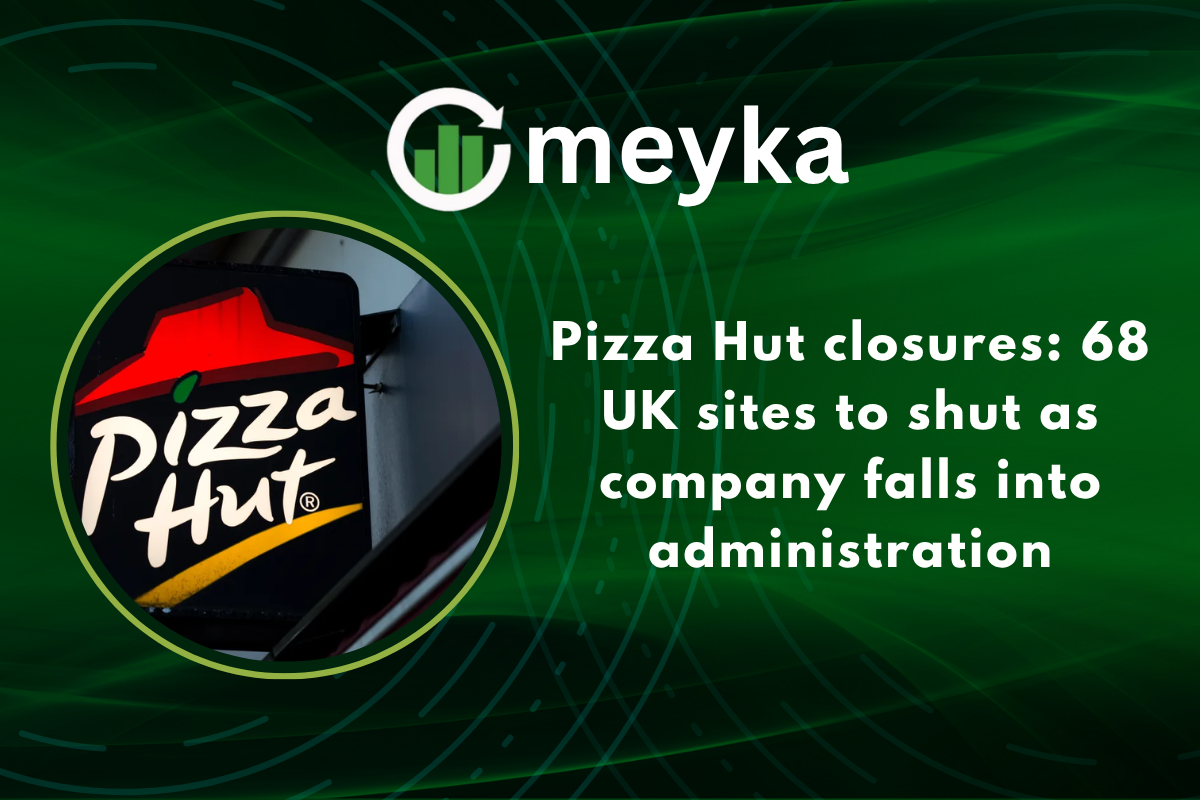Pizza Hut closures: 68 UK sites to shut as company falls into administration
Pizza Hut, a familiar name on British high streets, is set to close 68 dine-in restaurants after the company entered administration, officials confirmed on Monday. The move puts more than 1,200 jobs at risk and has left staff and regulars stunned across London, Manchester, Birmingham, and Glasgow.
The closures affect the UK dine-in arm only, with delivery and takeaway services said to continue operating normally.
Why is this happening to a long standing brand? Rising costs, shifting eating habits, and post-pandemic pressures have all squeezed mid market casual dining chains. Reports from The Guardian, ITV News, and other outlets show the closures are part of a wider hospitality crisis in the United Kingdom.
Pizza Hut’s UK Arm Enters Administration
Pizza Hut’s UK dine-in business entered administration after struggling with rising food, energy, and staffing costs, coupled with falling footfall in town centres.
Administrators appointed to oversee the process have said they will try to find buyers for parts of the business and save as many jobs as possible. The affected restaurants are franchise operated under UK management, while the global parent, Yum! Brands, is not directly responsible for the local administration.
Industry analysts point to sustained pressure on family dining formats, as more customers prefer delivery and quick service options. What does administration mean for diners? It means some restaurants will close, others may be sold, and staff face uncertainty as talks proceed.
Over 1,200 jobs at risk nationwide
Local media and union sources report that around 1,200 employees could lose work or face redeployment. The closures will be spread across England, Scotland, and Wales, hitting both city centre and suburban sites.
Administrators have said redundancy consultations will begin, though they also aim to redeploy staff to nearby delivery hubs or selling franchise partners where possible. Staff reactions on social media show shock and sadness, especially in smaller towns where a Pizza Hut restaurant is a long standing community spot.
Pizza Hut’s Struggle Reflects a Wider Hospitality Crisis
The Pizza Hut closures mirror broader trends in the UK restaurant sector, where rising operational costs and changing consumer preferences have proved brutal for mid market chains.
Since the pandemic, UK dining habits shifted quickly toward home delivery and value led offers. Companies also face higher energy bills, increased rent, and difficulty recruiting trained staff. Industry reports referenced by CNBC TV18 and UK outlets show that many chains have reduced their number of dine-in sites or restructured into smaller, lower cost formats.
Are UK diners simply eating out less? Analysts say tighter household budgets and the rise of app based delivery have both cut into traditional dine-in demand.
FTI Consulting appointed to manage the process
Administrators from FTI Consulting have been appointed to run the administration and explore rescue options. Their immediate goal is to stabilise the business and talk to landlords, creditors, and potential buyers.
The process could take several weeks, and decisions will hinge on lease terms and which outlets show the best prospects for survival.
FTI has said it will prioritise saving viable sites and keeping staff employed where possible.
Changing Dining Habits Challenge Traditional Brands
The pandemic accelerated a shift to delivery and takeaway, forcing legacy dine-in brands to adapt quickly or face sharp declines.
Delivery platforms such as Deliveroo and Uber Eats have grown in market share, and Domino’s and other delivery focused chains have captured more of the home dining market. Pizza Hut’s delivery arm continues to trade, helping preserve revenue streams, but corporate analysts stress that the dine-in model has become harder to sustain.
To survive, established chains must innovate with smaller footprint stores, digital ordering boosts, and new value propositions that match changing consumer expectations.
Can Pizza Hut reinvent itself? Industry watchers say it is possible, but the company will need fresh investment and a clear new strategy.
Public reaction and nostalgia
Many regulars took to social media to share memories of family nights and birthday parties at Pizza Hut. For some communities, the closures feel like the end of an era. Local councils and industry groups have urged administrators and potential buyers to consider the social impact of closures, especially in areas where restaurant options are limited.
The emotional response underlines how dining brands are part of local culture as well as commerce.
Economic Pressures Behind the Collapse
Key drivers include inflation, energy costs, wages, supply chain disruption, and reduced high street traffic.
Experts note that mid range casual dining chains operate on thin margins, and even modest increases in costs can become unsustainable. Data from hospitality bodies show rising numbers of UK restaurant closures this year, as smaller firms and larger chains alike confront a harsh trading environment.
There have been calls for targeted government relief, such as temporary business rate relief or energy support, to prevent more mass closures.
Could intervention help? Some industry leaders argue that well timed support could stabilise jobs and preserve local economies.
What’s next for the Pizza Hut brand in the UK?
The immediate future is uncertain. Administrators will seek buyers for parts of the dine-in portfolio, and some outlets may be sold to franchisees or converted to other formats. The global Pizza Hut brand and Yum! Brands continue to operate delivery and takeaway channels.
Analysts suggest potential outcomes include a leaner dine-in footprint, new express or hybrid concepts, or a partial sale that keeps some restaurants open under new ownership.
Can Pizza Hut rebuild its presence? With strong brand recognition, a focused turnaround plan could attract investors willing to adapt the model for today’s market.
Conclusion
The news that Pizza Hut will close 68 UK restaurants marks a sobering moment for the UK hospitality sector. More than 1,200 jobs are now at risk as administrators try to stabilise the business and find buyers for viable sites.
The closures reflect deeper changes in how Britons dine, as well as the harsh economic pressures facing mid market chains. F
or loyal customers and staff in London, Manchester, Birmingham, and beyond, the coming weeks will be a test of whether the brand can be reshaped to meet new demands.
For now, Pizza Hut’s future in the UK depends on quick action, investor interest, and a reinvention that matches today’s dining habits.
FAQ’S
Pizza Hut is closing 68 dine-in restaurants because of rising costs, reduced customer visits, and post-pandemic financial pressures. The company’s dine-in arm entered administration after struggling with high energy bills, rent, and staff expenses.
No, not all locations are closing. The delivery and takeaway branches of Pizza Hut will continue operating as usual. Only the dine-in restaurants managed under the UK franchise are affected by the administration process.
Around 1,200 employees across the United Kingdom may lose their jobs due to the closures. Administrators have said they are working to redeploy staff where possible and preserve as many roles as they can.
The restructuring and administration process is being managed by FTI Consulting. Their goal is to stabilize the business, find potential buyers, and keep viable restaurants running under new ownership if possible.
The future of Pizza Hut in the UK depends on whether new investors step in. While dine-in outlets are closing, the strong performance of delivery and takeaway services could help the brand rebuild through smaller, modern formats and digital innovation.
Disclaimer
This is for information only, not financial advice. Always do your research.






